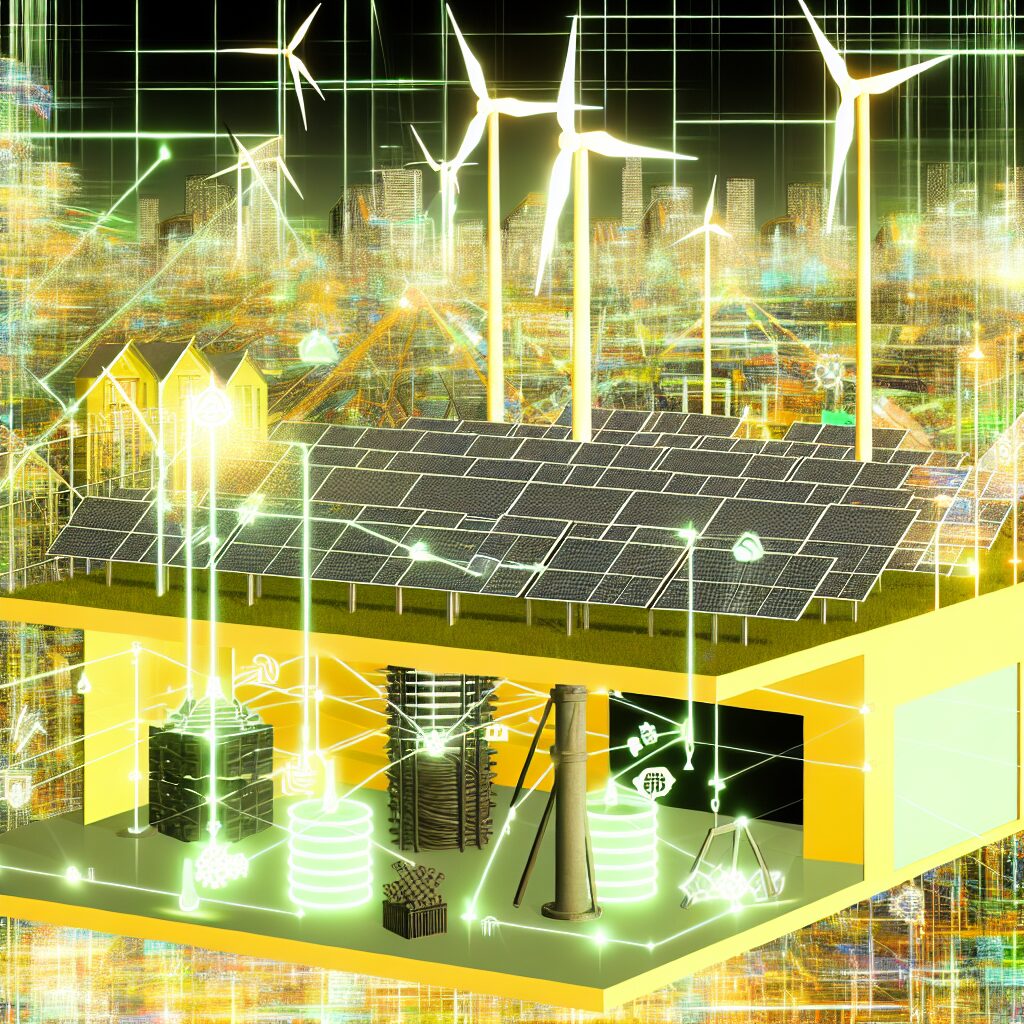How Virtual Power Plants are Revolutionizing Energy Grids
Virtual Power Plants (VPPs) are emerging as a groundbreaking technology with the potential to transform energy grids as we know them. By integrating and managing diverse energy resources through advanced software, VPPs offer a more resilient, efficient, and sustainable approach to electricity generation and distribution. However, despite their numerous benefits, outdated policies are stalling progress in the adoption and implementation of VPPs.
The Concept of Virtual Power Plants
A Virtual Power Plant is a network of decentralized, medium-scale power generating units such as wind farms, solar parks, and combined heat and power (CHP) units. These units are interconnected and managed via a central control system that leverages advanced software and data analytics. The objective is to optimize the generation, storage, and distribution of electricity in real-time.
Unlike traditional power plants that rely on a single source of generation, VPPs aggregate multiple energy sources to create a flexible and reliable energy supply. This approach not only enhances grid stability but also facilitates the integration of renewable energy sources, thus reducing our reliance on fossil fuels.
Benefits of Virtual Power Plants
Resilience and Reliability: One of the most significant advantages of VPPs is their ability to enhance grid resilience. By distributing power generation across various sources, VPPs can mitigate the risk of power outages caused by the failure of a single unit. This decentralized approach ensures a more reliable energy supply, even during peak demand periods or adverse weather conditions.
Efficiency: VPPs optimize the use of available energy resources, reducing waste and improving overall efficiency. Advanced algorithms and real-time data analytics enable VPPs to forecast demand accurately and adjust generation accordingly. This level of precision minimizes energy losses and ensures that electricity is generated and consumed in the most efficient manner possible.
Environmental Impact: The integration of renewable energy sources is a cornerstone of VPPs. By aggregating solar, wind, and other renewable energy sources, VPPs reduce our dependence on fossil fuels and lower greenhouse gas emissions. This shift towards cleaner energy not only benefits the environment but also aligns with global efforts to combat climate change.
Challenges and Policy Barriers
Despite the clear benefits of VPPs, outdated policies and regulatory frameworks are hindering their widespread adoption. Many existing energy policies were designed with traditional, centralized power plants in mind and do not accommodate the decentralized nature of VPPs.
Regulatory Hurdles: Current regulations often lack provisions for the integration and management of decentralized energy resources. This regulatory gap creates uncertainty for investors and developers, discouraging the deployment of VPPs. Additionally, existing grid codes and standards may not support the advanced functionalities required for VPP operations, further complicating their implementation.
Market Structures: Traditional energy markets are typically structured around large, centralized power plants. These market structures do not always provide the necessary incentives for the development and operation of VPPs. For example, market mechanisms for ancillary services, such as frequency regulation and voltage control, may not be designed to accommodate the contributions of decentralized energy resources.
Technological Integration: While VPPs rely on advanced software and data analytics, the integration of these technologies into existing grid infrastructure can be challenging. Legacy systems may not be compatible with the sophisticated control systems required for VPPs, necessitating significant upgrades and investments.
The Path Forward
To unlock the full potential of Virtual Power Plants, it is essential to address the policy and regulatory barriers that currently impede their progress. Policymakers must update regulatory frameworks to accommodate the decentralized nature of VPPs and provide clear guidelines for their integration into existing grids.
Policy Reforms: Regulatory reforms should focus on creating a conducive environment for the development and operation of VPPs. This includes updating grid codes and standards, establishing clear market mechanisms for ancillary services, and providing incentives for the integration of renewable energy sources.
Technological Advancements: Continued investment in research and development is crucial for advancing the technologies that underpin VPPs. This includes improving data analytics, developing more sophisticated control systems, and enhancing the compatibility of VPP technologies with existing grid infrastructure.
Public Awareness and Education: Raising public awareness about the benefits of VPPs is essential for garnering support for policy reforms and investments. Educational campaigns can help stakeholders understand the potential of VPPs to enhance grid resilience, improve efficiency, and reduce environmental impact.
Virtual Power Plants represent a paradigm shift in the way we generate and distribute electricity. By leveraging advanced technologies to integrate and manage diverse energy resources, VPPs offer a more resilient, efficient, and sustainable approach to energy grids. However, to fully realize the potential of VPPs, it is imperative to address the outdated policies and regulatory barriers that currently impede their progress. With

